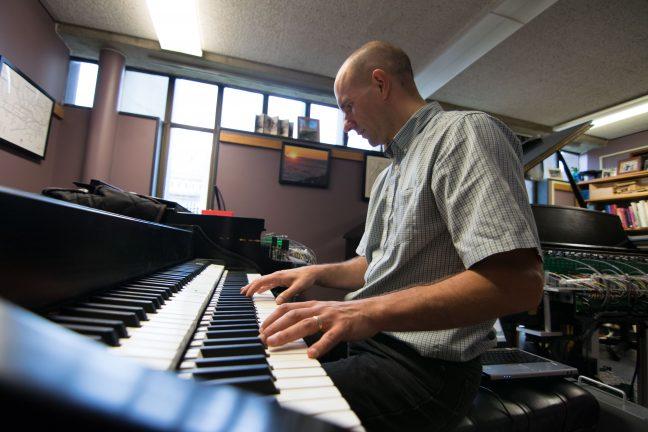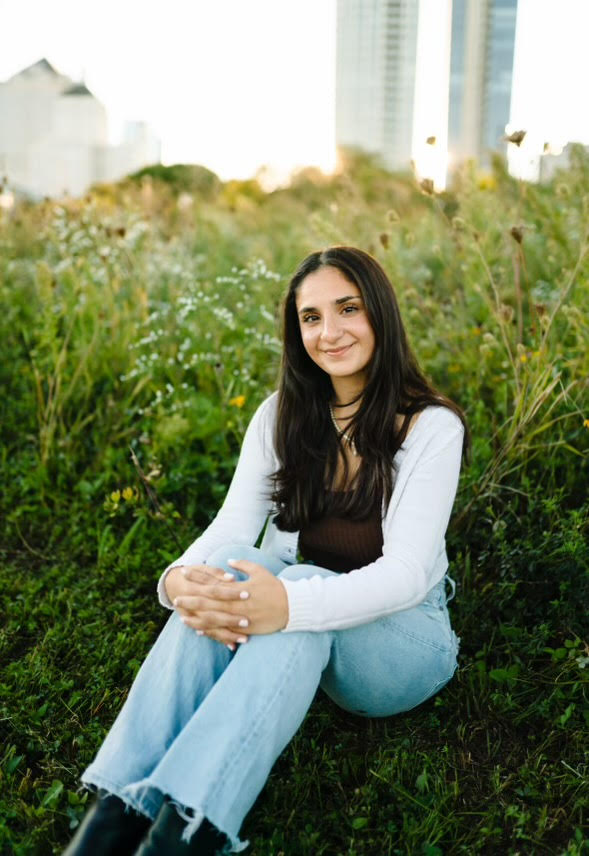Adding to his catalogue of achievements, Christopher Taylor can now call himself an inventor of an instrument that is the only one of its kind: the hyper piano.
Taylor, a University of Wisconsin music professor, is a world- renowned classical pianist, having played as a soloist at Carnegie Hall and together with the National Symphony Orchestra, New York Philharmonic and the Atlanta Symphony Orchestra.
Taylor, however, is not only accomplished in the music world. He has held an interest in math and computer science from an early age, and holds a mathematics degree from Harvard University. Using his passion for music and his skill at computer programming, Taylor has combined advanced technology and music to create his hyper piano, a double keyboard that uses the sound of two grand pianos to create authentic piano sounds.
WARF exhibit showcases inventions from university’s most innovative minds
About eight years ago, Taylor came up with the idea of the hyper piano after recognizing limitations with performing on the only double keyboard Steinway ever built. The unique instrument, owned by UW, was built in the 1920s and was collecting dust before Taylor discovered it in 2000, when he first came to UW.
Though Taylor enjoyed performing on the instrument, he said it felt strange to physically handle it at times. He wanted to improve the mechanics of the double keyboard to make it feel like playing on a normal piano using modern technology.
“It seemed to me that one of the best ways to do that would be to have an instrument that itself didn’t produce any sound and act as an input device,” Taylor said. “[The input device] would then electronically sense which keys are moving and would communicate that information in real time to a regular piano which would then play the music for you — sort of outsource sound production.”

The hyper piano sits in Taylor’s small office adjacent to his desk, connected electronically to two grand pianos. Taylor, with the help of his piano technician and engineering technicians at the Morgridge Center, took four-and-a-half years to build the silent hyper piano, or the “input device,” and the electronic system that connects both grand pianos.
UW professor challenges people to rethink realms ‘they thought they knew’
The mechanics of the hyper piano require a complex system of wires, circuit boards and sensory mechanisms. The keys of the hyper piano each use “special computer control routers” that Taylor programmed to play certain keys on the grand pianos. Additionally, there are four pedals on the foot of the hyper piano that control the pedals on the other pianos.
On each grand piano there is a rack of circuit boards and 88 solenoids, or as Taylor calls them, “artificial fingers,” that act as digital links that convert whichever keys on the grand piano he plays onto the hyper piano.
Along with that there are three “artificial feet” to play the pedals, so it is as if there are two other people playing the two grand pianos when only one person is needed to control the sounds of both.
Though the whole system requires many electrical components, Taylor said that it is designed to be easily portable compared to the Steinway so it can accommodate his performance and concert schedule. The racks along with the artificial fingers and artificial feet that attach to each grand piano can easily be detached and attached to any piano by loosening knobs that secure the mechanism in place.
Tinker away: Garage Physics helps realize student inventions
Now, having singlehandedly changed the parameters of music innovation with his invention, Taylor is planning on composing music and having other colleagues create compositions specifically for the hyper piano that he thinks will “opens up a whole bunch of new musical possibilities.”
Since he collaborated with Wisconsin Alumni Research Foundation for the project, Taylor also hinted at the possibility of licensing the invention to companies like Yamaha.
Taylor will debut the hyper piano Oct. 28 at Mills Hall, performing the Goldberg Variations by Bach.





















